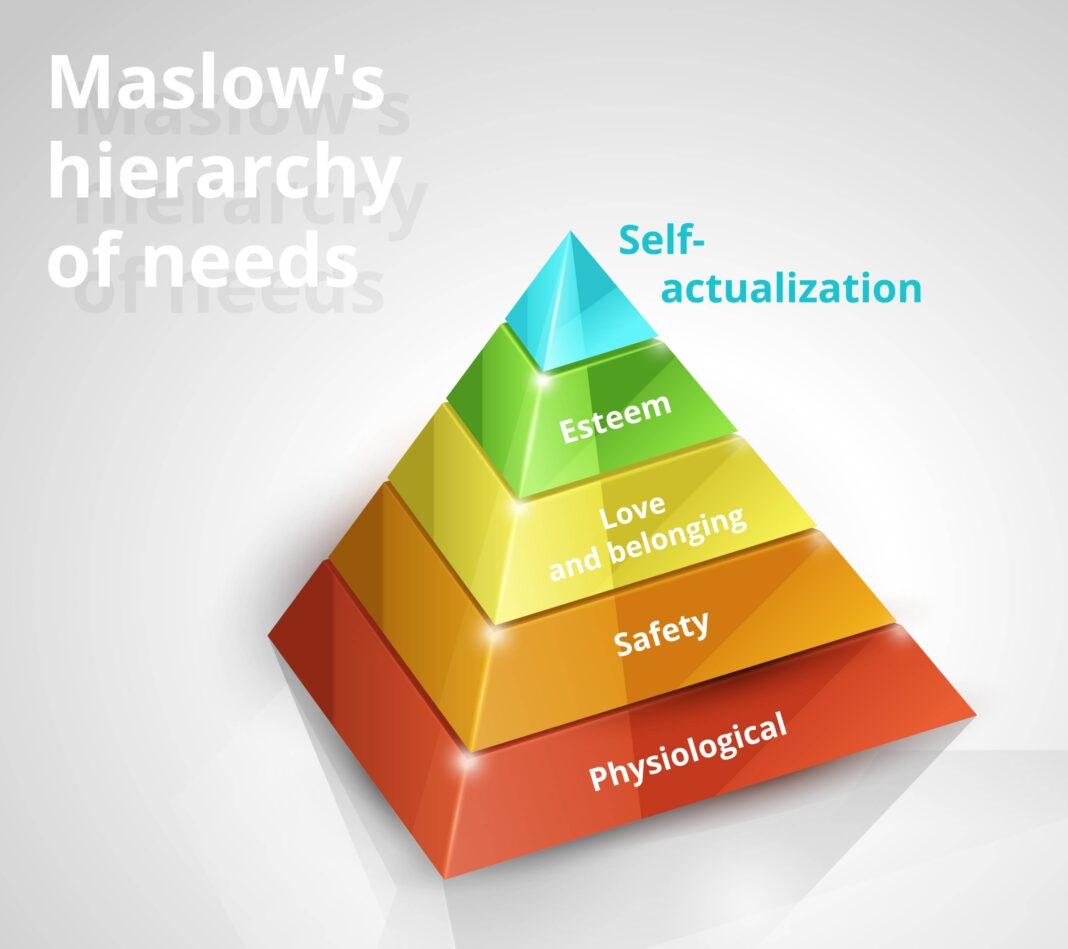People don’t just chase money or success for no reason. Our behavior is driven by something deeper—our needs. That’s exactly what Abraham Maslow, a psychologist in the 1940s, explored when he introduced the Hierarchy of Needs.
This theory is still one of the most important concepts in psychology, business, marketing, and even personal development.
🔺 What Is Maslow’s Hierarchy of Needs?
Maslow’s Hierarchy of Needs is a motivational theory that suggests people are motivated to fulfill basic needs before moving on to higher-level desires. It’s often shown as a pyramid, with five layers—starting from basic survival needs at the bottom and going up to self-fulfillment.
🧱 The Five Levels of Maslow’s Hierarchy of Needs
Let’s break down each level with real-life examples.
1. Physiological Needs – The Base of the Pyramid
These are basic survival needs. Without them, nothing else matters. People first need food, water, sleep, and shelter to even think about anything else.
✅ Real-Life Examples:
- Eating a meal when hungry.
- Drinking water to stay hydrated.
- Needing a warm place to sleep in winter.
In business, companies like Nestlé, Aquafina, or Daikin (air conditioners) cater to these essential needs.
2. Safety Needs – Feeling Secure and Protected
Once survival is taken care of, the next priority is safety—both physical and financial. People want to feel protected in their homes, jobs, and communities.
✅ Real-Life Examples:
- Buying insurance for health or a car.
- Installing home security systems.
- Working in a stable job with a reliable income.
Companies like State Life Insurance, SafeGuard, and Banking institutions focus on meeting these needs.
3. Love and Belongingness – The Social Connection
Humans are social creatures. After securing food and safety, we seek relationships, friendships, and community. We want to feel connected to others.
✅ Real-Life Examples:
- Spending time with family and friends.
- Using social media to stay in touch.
- Joining community groups or teams.
Social platforms like Facebook, WhatsApp, or community apps like Meetup thrive by fulfilling this need.
4. Esteem Needs – Respect and Recognition
People want to be respected, valued, and feel accomplished. This level is about self-esteem, confidence, and being recognized by others.
✅ Real-Life Examples:
- Receiving an award or promotion at work.
- Posting achievements on LinkedIn.
- Buying luxury items as a status symbol.
Brands like Rolex, Mercedes-Benz, and Apple often appeal to people’s esteem and social image.
5. Self-Actualization – Reaching Full Potential
At the top of the pyramid is the desire to grow, explore, and become the best version of yourself. This is where people chase dreams, creativity, and personal growth.
✅ Real-Life Examples:
- Starting a passion project or business.
- Pursuing higher education or spiritual goals.
- Creating art, writing, or traveling to grow as a person.
Platforms like MasterClass, Skillshare, or even YouTube educational channels serve this level.
🧩 Why Maslow’s Theory Still Matters Today
Whether you’re building a brand, managing a team, or working on self-improvement, understanding what drives human behavior can help you make better decisions.
In marketing, businesses use this theory to craft messages and products that meet specific needs:
- A health drink ad appeals to physiological needs.
- A safe car campaign taps into safety.
- A luxury brand speaks to esteem and status.
- A travel experience might trigger self-actualization.
📊 Quick Summary Table – Maslow’s Needs with Examples
| Level | Description | Real-Life Example |
|---|---|---|
| 1. Physiological | Food, water, sleep | Buying groceries, staying hydrated |
| 2. Safety | Security, job, health | Health insurance, installing a door lock |
| 3. Love & Belonging | Relationships, friends, community | Using WhatsApp, joining a club |
| 4. Esteem | Recognition, respect, achievement | Earning a promotion, buying a Rolex |
| 5. Self-Actualization | Fulfillment, creativity, growth | Taking a course, writing a book |
🌟 Final Thoughts: Maslow in Everyday Life
Maslow’s Hierarchy of Needs isn’t just theory—it’s something we live every day. From grabbing breakfast to feeling proud of a big accomplishment, these needs shape every decision we make.
By understanding where someone is on this pyramid, whether it’s a customer, employee, or even yourself, you can relate to them more effectively and create more meaningful interactions.
❓FAQ – Maslow’s Hierarchy of Needs
Q1: Is Maslow’s theory still relevant?
Absolutely! Although modern psychology has added depth to motivation theories, Maslow’s hierarchy remains a great framework for understanding human behavior.
Q2: Can needs overlap?
Yes. People often pursue multiple needs at once. You might work on a creative project (self-actualization) while also looking for job security (safety).
Q3: Is self-actualization the final stage?
For Maslow, yes—but he also later suggested “self-transcendence”, where individuals go beyond themselves to help others.
Q4: How do businesses use this theory?
Businesses align their products, marketing, and messaging to appeal to one or more levels of the hierarchy to influence consumer behavior.



